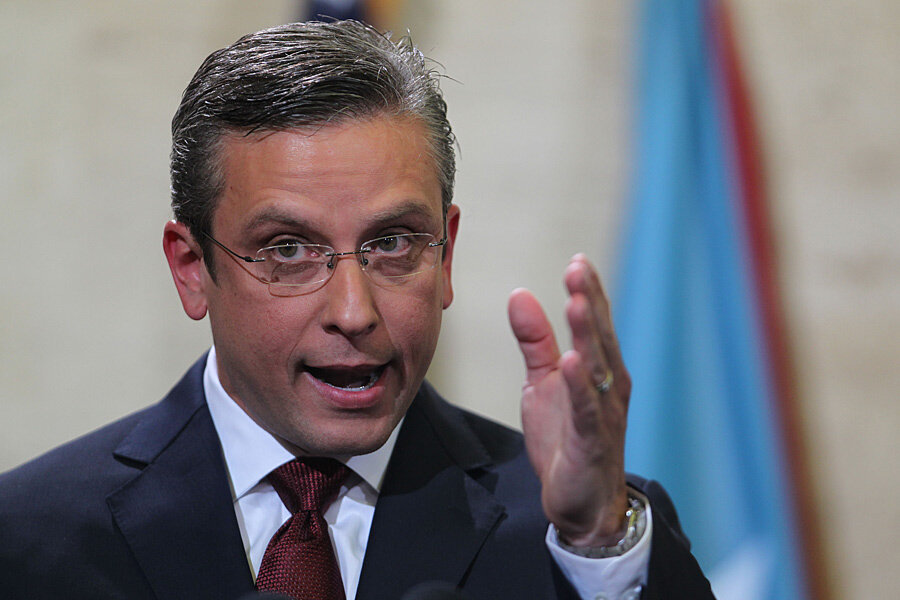How big a deal is Puerto Rico debt crisis?
Loading...
Puerto Rico’s governor says that the territory’s $72 billion in public debt is unpayable and that large-scale restructuring of the debt is required.
"There is no other option. I would love to have an easier option. This is not politics, this is math," Gov. Alejandro García Padilla told The New York Times.
The comments by the island’s chief executive came as a report was released Monday about Puerto Rico’s economy, laying out a grim picture of the island’s financial health. The report suggests, among other things, debt restructuring through bond exchanges.
No US state has had a large-scale debt restructuring of this type in recent memory. "There is no U.S. precedent for anything of this scale or scope," according to the report, whose lead author is Anne Krueger, a former chief economist at the World Bank.
Just how big a deal is this?
While the debt restructuring would be unprecedented, some analysts are taking a measured approach to the situation.
Jose Villamil, a former United Nations consultant and CEO of an economic and planning consulting firm, says he believes that the news will have only a limited effect on financial markets, because it has been known for some time that Puerto Rico has been heading for debt restructuring or default.
"The last four administrations have kicked the can down the road," Mr. Villamil told the Associated Press.
But the situation is now critical. "At this point, there is no more can to kick. So we're going to take some very strict measures and some very profound measures. It's going to hurt, but there's no way out," Villamil said, according to AP.
News of the crisis comes amid the high-profile economic challenges of Greece. That country’s government is scrambling to prevent a financial collapse.
In the United States in the past decade, a number of municipalities have defaulted – most notably Detroit in 2013. But even in comparison with Detroit, which holds the record for the largest US municipal bankruptcy, Puerto Rico has debt that is staggering. Its bonds have a face value roughly eight times that of Detroit’s bonds.
In his interview with the Times, Governor García Padilla said Puerto Rico would seek concessions from possibly all its creditors, which could take the form of debt deferments or extensions of payment timetables. He called on creditors to "share the sacrifices" of the island’s residents, who have shouldered some of the burden through tax increases.
Additionally challenging for Puerto Ricans, the island's constitution puts its commitment to pay creditors over all other concerns, including pension payments.
"This is a daunting agenda politically, legally, and organizationally," the so-called Krueger report states. "It is also an urgent one: the government’s cash balances can evaporate in the face of delays, reducing the room for maneuver and intensifying the crisis."
Puerto Rico’s problems started in the mid-2000s, when a federal tax subsidy for manufacturing on the island expired, leading to an exodus of employers and workers for the mainland.
Beset with issues like unemployment and revenue shortfalls, the government took to borrowing to balance the budget, until Puerto Rico’s credit level was downgraded to junk status last year. In 2000, its debt was about 63 percent of gross national product, whereas this year, it is projected to be 100 percent of GNP, according to the Krueger report.
In a further challenge, Puerto Rico cannot legally file for Chapter 9 bankruptcy protection under US rules. The Kruger report looks to the federal government for help in dealing with this particular issue, calling on Congress to lift the exclusion of the island from the nation’s bankruptcy code.








